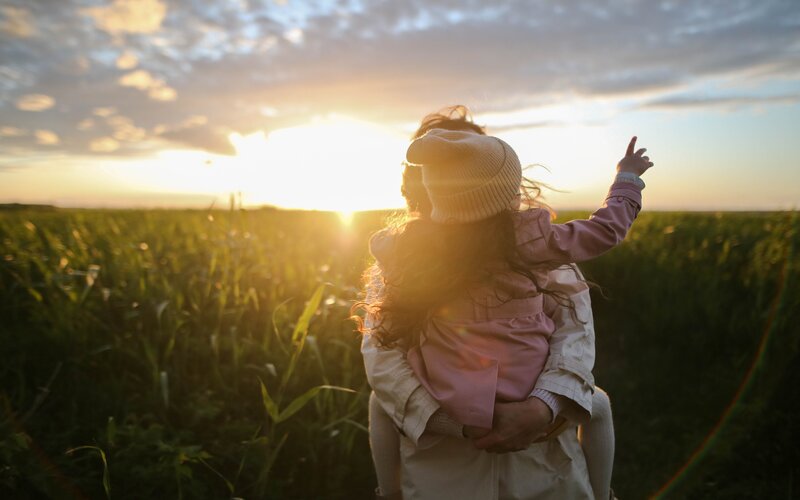Depending on where your home is and a few other factors, your stamp duty costs when buying a property could be very little, tens of thousands of dollars, or somewhere in between.
What is stamp duty?
Stamp duty is essentially a state or territory government tax on certain purchases, including property. In some jurisdictions, it may be referred to as transfer duty as it incorporates the cost of transferring the ownership of the property from one owner to the next.
Stamp duty isn’t just payable on properties. Another major stamp duty cost is on the purchase of a car, while you may also have to pay stamp duty on:
-
insurance policies
-
hire purchase agreements
-
transfers of other assets, like a business or certain shares
-
intellectual property
-
equipment
And more. But in the vast majority of cases, stamp duty on a property purchase will be the biggest hit in terms of cost.
How much does stamp duty cost?
Stamp duty can be a major expense when buying a home, easily setting you back thousands, if not tens of thousands, of dollars. As an example, stamp duty for an established home valued at $500,000 in New South Wales will cost more than $17,000.
Stamp duty costs need to be taken into account when you’re looking to buy a home. Saving for a deposit is one thing but as stamp duty costs are levied upfront, home buyers will also need to account for the additional expense. For those who haven’t factored in stamp duty, it can often scupper plans to buy until they have saved more money to cover it.
Factors that influence stamp duty costs
Stamp duty is not one fixed cost. It varies between the states and territories with a number of other factors that can be taken into account:
-
the cost of the property (land and/or home)
-
household income
-
purpose of the property (are you investing, or going to live in it?)
-
whether you’re a first home buyer
-
the type of dwelling (is it an existing home, vacant land, or a newly constructed home?)
-
your number of dependent children or pension status
Stamp duty costs by state: Buying property
States and territories have different rules surrounding stamp duty concessions and exemptions. As such, where you’re purchasing has a major bearing on how much you’ll pay.
Below are just some examples of stamp duty costs (as at November 2024) in each state and territory. They are based on a $500,000 established home being purchased by a non-first home buyer, with no children in a dual-income household earning $140,000 a year. Other government fees included in the totals below include land transfers and mortgage registration fees.
NSW | VIC | QLD | ACT | SA | WA | TAS | NT |
NSW stamp duty costs
In New South Wales, you need to pay stamp duty within three months of signing a contract of sale, except for off-the-plan purchases.
|
Property purchase |
Stamp duty cost |
Total government fees (est.) |
|
Owner-occupier |
$17,029 |
$17,372 |
|
Investor |
$17,029 |
$17,372 |
VIC stamp duty costs
Victoria is one of the most expensive states for stamp duty but does offer a principal place of residence (PPR) concession for those who live in the property for 12 months after buying.
|
Property purchase |
Stamp duty cost |
Total government fees (est.) |
|
Owner-occupier |
$21,970 |
$23,361 |
|
Investor |
$25,070 |
$26,461 |
QLD stamp duty costs
Queensland is one of the least-expensive states for stamp duty. However, it levies a significant surcharge to foreign purchasers (an additional $35,000 on the example calculation).
|
Property purchase |
Stamp duty cost |
Total government fees (est.) |
|
Owner-occupier |
$8,750 |
$10,608 |
|
Investor |
$15,925 |
$17,783 |
ACT stamp duty costs
The ACT provides a number of schemes offering concessions for pensioners, those with disabilities, and offers a stamp duty exemption for those buying off-the-plan units.
|
Property purchase |
Stamp duty cost |
Total government fees (est.) |
|
Owner-occupier |
$8,720 |
$9,355 |
|
Investor |
$11,400 |
$12,035 |
SA stamp duty costs
South Australia offers a stamp duty exemption for first homebuyers building or purchasing new properties only, but no other concessions.
|
Property purchase |
Stamp duty cost |
Total government fees (est.) |
|
Owner-occupier |
$21,330 |
$26,309 |
|
Investor |
$21,330 |
$26,309 |
WA stamp duty costs
Western Australia offers stamp duty exemptions for first homebuyers purchasing properties up to $450,000 with a concession for amounts between $450,000-$600,000.
|
Property purchase |
Stamp duty cost |
Total government fees (est.) |
|
Owner-occupier |
$17,765 |
$18,276 |
|
Investor |
$17,765 |
$18,276 |
TAS stamp duty costs
Tasmania offers a range of stamp duty concessions and exemptions including an exemption for first home buyers purchasing a home for $750,000 or less.
|
Property purchase |
Stamp duty cost |
Total government fees (est.) |
|
Owner-occupier |
$18,248 |
$18,652 |
|
Investor |
$18,248 |
$18,652 |
NT stamp duty costs
There are no first homebuyer stamp duty concessions in the NT although exemptions may apply for eligible house and land purchases.
|
Property purchase |
Stamp duty cost |
Total government fees (est.) |
|
Owner-occupier |
$23,929 |
$24,273 |
|
Investor |
$23,929 |
$24,273 |
Calculations according to Savings.com.au Stamp Duty Calculator
How can you save on stamp duty?
Stamp duty concessions and exemptions vary widely between the states and territories. Generally, there are a few strategies that can reduce the big financial hit of stamp duty.
See also: State and territory stamp duty exemptions breakdown
Be a first home buyer
To alleviate some of the difficulty of buying a first home, most state and territory governments provide significant stamp duty exemptions or concessions for those purchasing homes for the first time.
There are some exceptions though. The Northern Territory offers no first homebuyer concessions or exemptions, while South Australia only extends them to those purchasing new homes or buying land where a new home will be built, not established homes.
How much you can save varies widely. Here’s how much stamp duty would cost for first homebuyers purchasing a $500,000 established property as an owner-occupier in each jurisdiction. (Note: the quoted amount is for stamp duty only and does not include other associated government fees.)
|
State/Territory |
Stamp duty cost (FHB) |
Stamp duty cost (non-FHB) |
|
ACT |
$0 |
$8,720 |
|
NSW |
$0 |
$17,372 |
|
VIC |
$0 |
$21,970 |
|
QLD |
$0 |
$8,750 |
|
SA |
$21,330 |
$21,330 |
|
WA |
$7,505 |
$17,765 |
|
TAS |
$0 |
$18,248 |
|
NT |
$23,929 |
$23,929 |
Buy a cheaper home, or build one
Put simply, the more the property costs, the more stamp duty you pay. Stamp duty costs are generally lower for people buying land only. The reason is quite simple: vacant blocks are usually significantly cheaper than established homes. You also only pay stamp duty on the value of the land, not the home that will eventually be built on it.
Some states also give stamp duty exemptions or concessions for buying off-the-plan units or apartments.
Live in the house first
Some states and territories levy higher stamp duty on investors than they do on owner occupiers. One strategy to limit stamp duty is to plan to live in an investment property for 12 months before renting it out. This qualifies the sale as an owner-occupier purchase.
It’s also worth noting stamp duty costs are not tax-deductible for investors unlike some other costs associated with the purchase of investment property.
See also: How is rental income taxed?
The other benefit to this strategy is that home loan interest rates are generally lower for owner occupier loans than investor loans. The table below features owner occupier home loans with some of the lowest interest rates on the market:
| Lender | Home Loan | Interest Rate | Comparison Rate* | Monthly Repayment | Repayment type | Rate Type | Offset | Redraw | Ongoing Fees | Upfront Fees | Max LVR | Lump Sum Repayment | Extra Repayments | Split Loan Option | Tags | Features | Link | Compare | Promoted Product | Disclosure |
|---|---|---|---|---|---|---|---|---|---|---|---|---|---|---|---|---|---|---|---|---|
5.54% p.a. | 5.58% p.a. | $2,852 | Principal & Interest | Variable | $0 | $530 | 90% |
| Promoted | Disclosure | ||||||||||
5.49% p.a. | 5.40% p.a. | $2,836 | Principal & Interest | Variable | $0 | $0 | 80% |
| Promoted | Disclosure | ||||||||||
5.64% p.a. | 5.89% p.a. | $2,883 | Principal & Interest | Variable | $250 | $250 | 60% |
| Promoted | Disclosure | ||||||||||
5.64% p.a. | 5.89% p.a. | $2,883 | Principal & Interest | Variable | $248 | $350 | 60% |
|
Other concessions or exemptions
Some states and territories will grant stamp duty exemptions or concessions for a number of reasons including:
-
you are an eligible pensioner who is downsizing
-
you are eligible under a disability scheme
-
inheriting a property from a deceased estate
-
property transfers between spouses or partners
-
property transfers as a result of relationship or family breakdowns
-
bankruptcy and insolvency transfers
-
property transfers involved with family farms
It is wise to check the eligibility criteria set down by the relevant state and territory governments or seek the advice of a conveyancer or solicitor handling the property settlement.
Do you need to pay stamp duty upfront?
Stamp duty is an upfront property cost so in the majority of cases, most lenders will require you to pay stamp duty along with your deposit when you purchase the property. Generally, your lender and conveyancer should advise you how to pay your stamp duty and depending on where you’re buying, you’ll have between one and three months to pay it from the property settlement date.
In some situations, a lender may allow you to add the cost of stamp duty to your loan amount which, of course, will considerably increase the total interest repaid over the life your loan. But generally, lenders prefer the upfront method.
Should stamp duty be scrapped?
As one might imagine, paying a substantial sum of money to the government to house yourself - or others - isn’t popular with too many people. The property industry regularly calls for stamp duty to be scrapped or at least the cost of it to be significantly reduced.
One study has found the cost of stamp duty has skyrocketed over the past 40 years when measured against average after-tax income. During that time, the cost of property has risen at a far greater rate than incomes and stamp duty brackets have failed to adjust accordingly, effectively reaping significantly larger inflows of revenue for state and territory governments.
PropTrack senior economist Angus Moore describes it as an “inefficient tax” as it discourages people from moving to homes that better suit their needs while impacting housing affordability and the economy more broadly.
Other property industry figures call it a “lazy tax” and urge state and territory governments to review stamp duty brackets as well as concession and exemption thresholds to better reflect real property values on the market.
Tax analysts agree stamp duty is not a reliable tax for state and territory governments - it flows in when the property market is booming and trickles in when it slows. Others warn scrapping stamp duty will only lead governments to levy other property-related taxes in its place with unknown consequences.
From time to time, the federal government also calls for the state and territory governments to unwind stamp duty in the interests of boosting housing affordability and home ownership. Ironically, when the GST was launched in 2001, it was designed to phase out a number of state and territory taxes, stamp duty among them. It clearly didn’t transpire that way.
Savings.com.au’s two cents
Much of the advice around property purchasing is to build your deposit to a healthy portion of a property’s value or have enough equity in your current home to buy again. Sometimes stamp duty can escape a buyer’s consideration - they may know it’s there but not realise how big the hit will be.
Stamp duty can certainly come as a shock. For some, it can take them out of the market until they save enough to cover the additional upfront cost that comes with buying a home.
Make sure you’re at least aware of how much stamp duty could cost you before you go looking for a home. Our stamp duty calculator can give you a good idea. Put it into your budget and make provisions for how you’ll be able to cover the expense when the time comes.
In a fast-rising property market, you may decide to look for a home lender who’ll lend you more to cover the cost of stamp duty just so you can secure your place in the market. A good mortgage broker can help you find a suitable lender if that’s the way you decide to go. If you can, it’s best to try to pay stamp duty upfront to avoid paying ongoing interest on it which can add thousands of dollars to the interest you pay over the life of your loan.
Be sure to check the relevant state and territory exemptions and concessions for where you are purchasing and take advantage of any that apply to your circumstances. From time to time, state and territory governments may announce new or temporary concessions for political or economic reasons. Such concessions may present an opportune time to purchase if they suit your circumstances and you’re ready to buy.
First published on March 2021
Photo by Jaye Haych on Unsplash

Ready, Set, Buy!
Learn everything you need to know about buying property – from choosing the right property and home loan, to the purchasing process, tips to save money and more!
With bonus Q&A sheet and Crossword!







 Bernadette Lunas
Bernadette Lunas
 Denise Raward
Denise Raward
 Harry O'Sullivan
Harry O'Sullivan
 Emma Duffy
Emma Duffy


